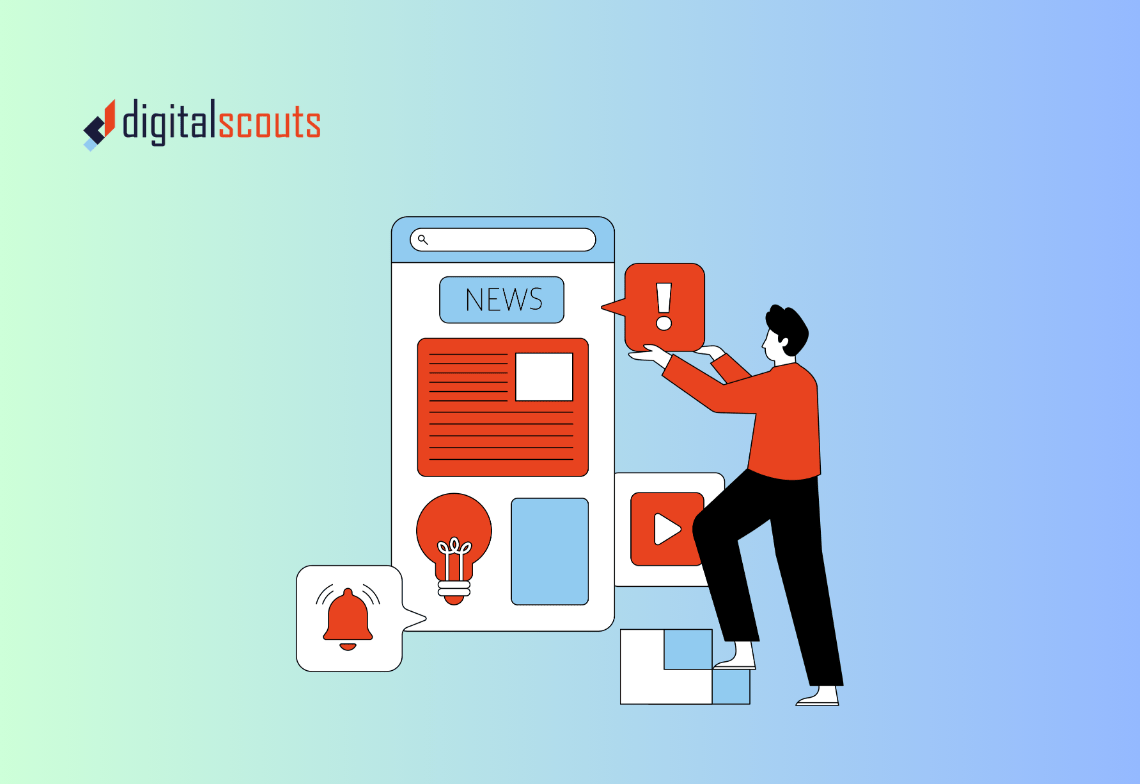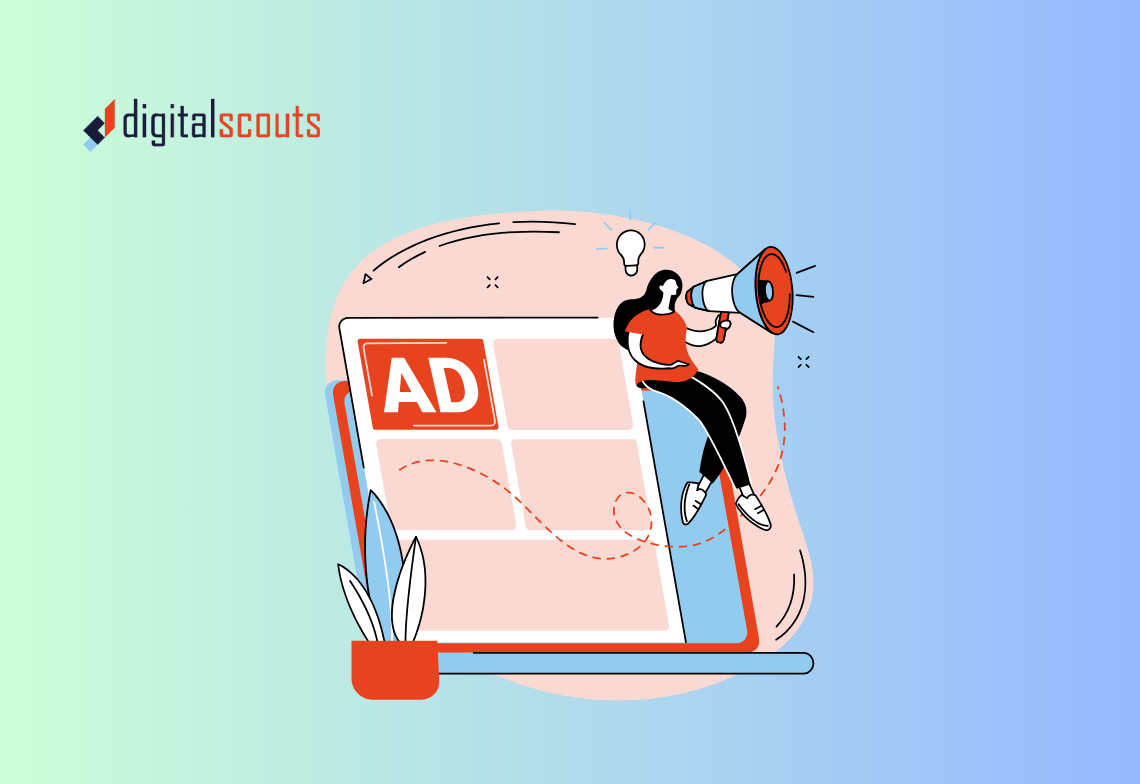Running paid campaigns for a SaaS product is not about chasing clicks. It is about designing a performance system that generates qualified pipeline.
In B2B SaaS, every dollar spent on ads must connect directly to business outcomes. You are not selling a simple product but a subscription, a value promise, and a long term relationship. The real challenge is to make sure your media spend turns attention into adoption and advocacy.
This guide breaks down how to plan, execute, and optimise a B2B paid media strategy that drives measurable ROI across LinkedIn, Google, and Meta.
Why paid media matters for SaaS
Organic channels are essential, but they take time to scale. Paid media allows SaaS companies to test value propositions, accelerate awareness, and generate leads faster — as long as the targeting and measurement are precise.
A structured B2B paid media strategy achieves three things:
-
Builds awareness in the right market segments
-
Captures intent from buyers already searching for solutions
-
Nurtures leads through the funnel with relevant messaging
The goal is not to buy traffic. It is to buy learning and momentum that helps the business understand which audiences, messages, and offers actually drive revenue.
Start with a clear foundation
Before launching a single ad, you need alignment across your marketing, sales, and RevOps teams. A strong foundation determines how efficient and scalable your campaigns will be.
1. Define your ICP and personas
In SaaS, precision matters more than volume. Identify the decision makers and influencers who drive purchase decisions. Use firmographic filters like company size, industry, and tech stack, along with behavioural data such as product engagement or content downloads.
2. Map your buyer journey
Understand how prospects move from awareness to purchase. A CTO might discover your brand through a thought leadership ad on LinkedIn, then later search for product comparisons on Google. Design your paid strategy to support these transitions between platforms.
3. Align goals and metrics
Your top of funnel campaigns should measure reach and engagement. Mid funnel campaigns focus on lead quality and cost per qualified lead. Bottom of funnel campaigns track pipeline velocity and revenue contribution. Every channel needs its own success metric tied back to revenue.
Structuring your B2B paid media plan
Paid media is most effective when channels work together. Each platform plays a specific role in the funnel, and understanding these roles helps avoid wasted spend.
LinkedIn: The awareness and targeting powerhouse
LinkedIn is the most powerful platform for B2B SaaS targeting. It allows you to segment audiences based on job titles, industries, company size, and even technology use.
Best for
-
Brand awareness and thought leadership
-
Lead generation for mid to high value SaaS products
-
Account based marketing campaigns
Recommended approach
-
Use Sponsored Content and Document Ads to promote valuable resources such as guides, webinars, or product benchmarks.
-
Retarget users who engage with your company page or videos.
-
Test Conversation Ads for personalised outreach when targeting smaller lists of decision makers.
Metrics to track
-
Click through rate (CTR) for ad engagement
-
Cost per lead (CPL) for gated content
-
Lead quality and conversion rate from form submissions
Google Ads: Capture intent and demand
Google Ads is your bottom of funnel engine. It captures prospects who are already looking for a solution like yours.
Best for
-
Capturing existing intent
-
Product comparison and competitor targeting
-
Driving demo requests or free trial signups
Recommended approach
-
Start with exact match and phrase match keywords around product category and pain points.
-
Use Responsive Search Ads with clear value propositions and proof points.
-
Build retargeting lists from website visits and nurture them with display or video ads.
Metrics to track
-
Conversion rate and cost per conversion
-
Search impression share
-
Quality Score and landing page experience
Meta (Facebook and Instagram): Extend reach and retarget
Meta is often underestimated in B2B SaaS but is valuable for retargeting and brand reinforcement. Many decision makers still spend time on these platforms outside work hours.
Best for
-
Retargeting warm audiences who visited your site or engaged with ads
-
Promoting events, webinars, or top of funnel content
-
Building awareness in new markets at low cost
Recommended approach
-
Use short, visual creatives that reinforce your brand message.
-
Create lookalike audiences from CRM or HubSpot lists.
-
Run video remarketing campaigns that tell your product story in 30 seconds or less.
Metrics to track
-
Reach and frequency
-
Engagement rate
-
Assisted conversions through attribution
Crafting messages that convert
B2B SaaS advertising works when it blends precision targeting with human storytelling.
1. Lead with the problem, not the product
Executives care less about features and more about outcomes. Start your ad copy with the pain point your product solves and quantify the benefit.
2. Use clear and credible proof
Include social proof like customer logos, data points, or testimonials. This builds trust and helps overcome the natural scepticism of software buyers.
3. Match your message to intent
Top of funnel ads should educate. Middle funnel ads should persuade. Bottom of funnel ads should drive action. If someone already knows your brand, move beyond “what we do” to “why choose us now.”
Designing landing pages that convert
Even the best ads fail without well designed landing pages. Every click should lead to a focused experience that drives one action — sign up, book a demo, or download content.
Key principles
-
Keep copy short and benefit driven
-
Use one clear call to action above the fold
-
Include short forms and progressive profiling for better conversion rates
-
Add proof elements such as customer quotes or review badges
A B2B landing page should answer three questions immediately:
-
What problem does this solve
-
How does it make my job easier
-
Why should I trust this company
Tools like HubSpot Landing Pages make it easy to test variations and connect lead data directly to your CRM for follow up.
Using data to optimise performance
A strong B2B paid media strategy is never static. It evolves with data.
1. Test systematically
Run controlled A/B tests on headlines, visuals, and offers. Change one element at a time so results are clear.
2. Use CRM and attribution data
Integrate your paid channels with your CRM or RevOps platform to see which campaigns influence closed deals, not just leads. Attribution insights will help you reallocate spend more intelligently.
3. Automate reporting
Create dashboards that show spend, CPL, pipeline, and ROI in real time. This helps leadership see the connection between budget and revenue.
Balancing brand and performance
B2B SaaS brands that focus only on lead generation often miss the bigger picture. Building trust and recognition through awareness campaigns improves long term performance.
Allocate at least 20 to 30 percent of your paid budget to brand building activities like video storytelling, thought leadership, and case studies. Over time, brand familiarity lowers your CPL and improves conversion rates across every channel.
Common pitfalls to avoid
-
Over targeting
Too narrow a focus can limit reach and drive up costs. Balance precision with scale. -
Ignoring creative fatigue
Rotate ad visuals and copy every four to six weeks to keep engagement high. -
Not nurturing leads
Follow up paid leads with automated workflows and personalised sequences. Paid media brings the traffic, but nurturing turns interest into revenue. -
Measuring the wrong metrics
Click through rate or cost per click are useful indicators but not the ultimate goal. Track metrics that tie to revenue, such as marketing influenced pipeline and deal velocity.
Building your B2B paid media framework
A complete paid media strategy for SaaS connects targeting, creative, and measurement into one continuous loop.
Plan
Define audience segments, messaging hierarchy, and funnel stages.
Launch
Run campaigns across LinkedIn, Google, and Meta with aligned offers.
Measure
Track qualified leads, pipeline, and ROI in a unified dashboard.
Optimise
Shift budget to top performing segments and refresh creatives based on learnings.
Scale
Layer in new geographies or verticals once unit economics are stable.
When done right, paid media becomes not just a channel but a growth engine that feeds your entire go to market system.
Bringing it all together
A high performing B2B paid media strategy is not about which platform is best. It is about building an ecosystem that aligns channels, data, and content around the buyer journey.
For SaaS companies, the opportunity lies in connecting paid campaigns to measurable outcomes — pipeline, conversions, and revenue. With the right structure, you can turn every dollar of ad spend into insight and every insight into growth.
If you want help designing or optimising your B2B paid media strategy, contact the team at Digitalscouts. We help SaaS and B2B brands build performance systems that scale with clarity and purpose.
Frequently Asked Questions
About Author
Ashish is a B2B growth strategist who helps scaleups align marketing and sales through Account-Based Marketing (ABM), RevOps, and automation. At DigitalScouts, he builds scalable content engines, streamlines lead flows with HubSpot, and runs targeted GTM programs to drive predictable pipeline. He regularly shares insights on using AI and automation to power ABM and accelerate complex buyer journeys.








